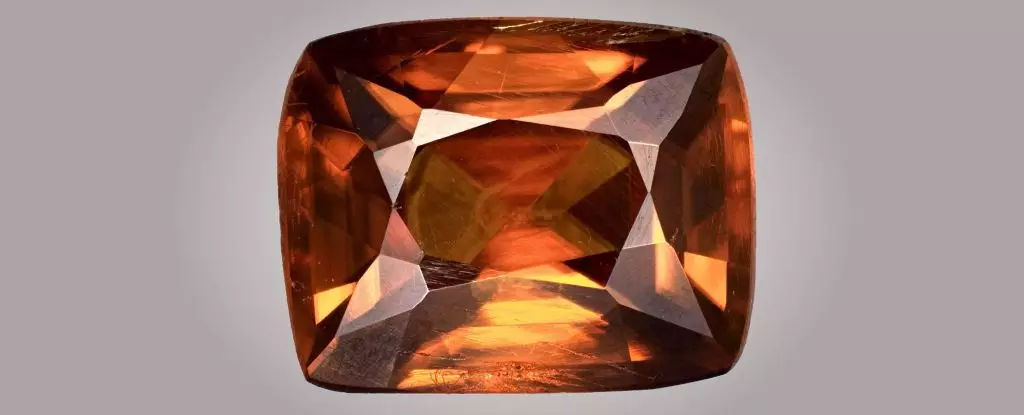Kyawthuite, an enigmatic mineral that has captivated gemologists and researchers alike, stands as a testament to nature’s capacity for rarity. Only one specimen has ever been discovered in the world, making this tawny-hued gem a symbol of both geological wonder and the thrill of discovery. With a weight comparable to a small stone, this mineral has a depth of significance that far exceeds its diminutive size.
The saga of kyawthuite began in 2010 in a market in Chaung-gyi, Myanmar, where gem enthusiast Kyaw Thu stumbled across what he initially thought was a common mineral known as scheelite. The stone, weighing just a third of a gram and presenting a seemingly pedestrian appearance, could easily have been overlooked. However, Thu’s intuitive sense for gems sparked his interest. Upon faceting the stone, he quickly realized it was unlike any mineral he had previously encountered. His determination to uncover the stone’s true identity led him to the Gemological Institute of America (GIA) Laboratory in Bangkok.
Prior to its analysis at GIA, many gems and minerals had been studied and cataloged, and yet this tiny grain would redefine what gem enthusiasts knew about the world’s offerings. The laboratory’s findings revealed that kyawthuite was associated with synthetic BiSbO4—specifically Bi3+Sb5+O4, a configuration never documented in nature until that moment. Gemologist Kyaw Thu expressed the gravity of this discovery succinctly: “This is the first in the world. It is not found in other countries,” asserting the singularity of kyawthuite’s existence.
A Closer Examination: Characteristics and Origins
Kyawthuite stands out not only for its rarity but also for its striking features. The mineral exhibits a saturated orange color, accented by a subtle red overtone. When subjected to abrasion, it leaves behind a white streak indicative of its unique composition. This aspect of kyawthuite helps explain its formation process, which is believed to be heavily influenced by the environmental conditions found in pegmatite rocks.
These rocks, too, have an interesting composition, akin to a fruitcake due to their blend of various minerals. It is within this intricate geological structure that the conditions for kyawthuite’s formation likely arose. The presence of important trace elements such as titanium, niobium, tungsten, and uranium further supports the theory of its pegmatitic origins. Research suggests that the formation of bismuth antimonite crystals requires elevated temperatures typically achieved during the cooling of magma; this hints at kyawthuite’s volcanic ancestry, providing further insight into its remarkable origins.
The concept of value often hinges on scarcity, and kyawthuite exemplifies this rule distinctly. Currently deemed “priceless,” this gem’s value defies simple monetary evaluation. For juxtaposition, consider painite—the second-rarest gemstone—valued between $50,000 to $60,000 per carat. In contrast, kyawthuite, with its singular existence, elevates the criteria for what can be considered valuable in the world of gems.
The intrigue surrounding kyawthuite calls into question the very nature of rarity and value within the realm of mineralogy. In a world where gems are often classified and commercialized, kyawthuite serves as a reminder that unique finds can transcend traditional metrics of worth.
Currently, kyawthuite is housed within the National Museum of Natural History in Los Angeles County, where it is protected and showcased, standing as a symbol of both scientific achievement and the breathtaking intricacies of the natural world. This leading-edge discovery prompts a fuller appreciation for our planet’s diverse geological tapestry and inspires ongoing exploration and study.
The journey of kyawthuite brings to light the vast unknowns that still exist in our understanding of mineralogy. As we delve deeper into our planet’s formidable history and the unique circumstances that give rise to such gems, it becomes increasingly evident that the allure of discovery is ever persistent. In a world where so much seems familiar, kyawthuite’s rarity offers a refreshing perspective on the unexpected wonders that still await our examination.


Leave a Reply